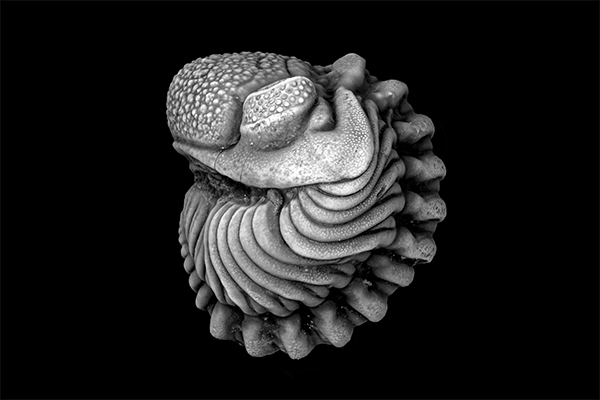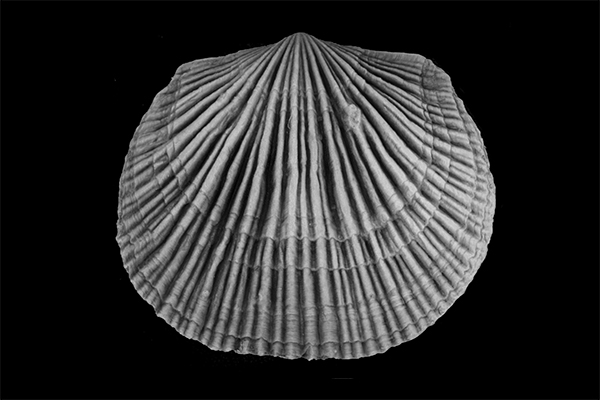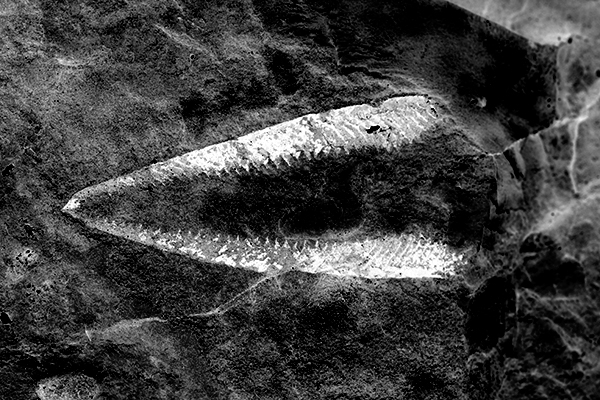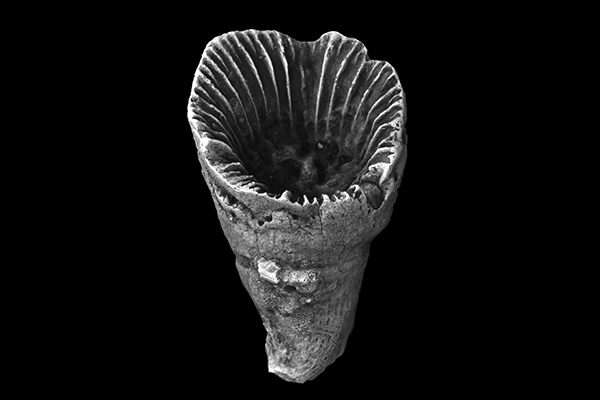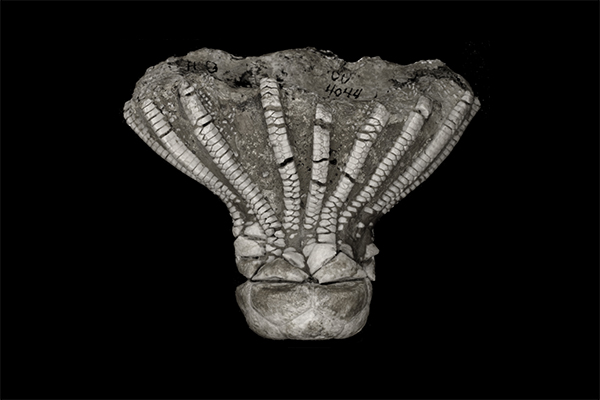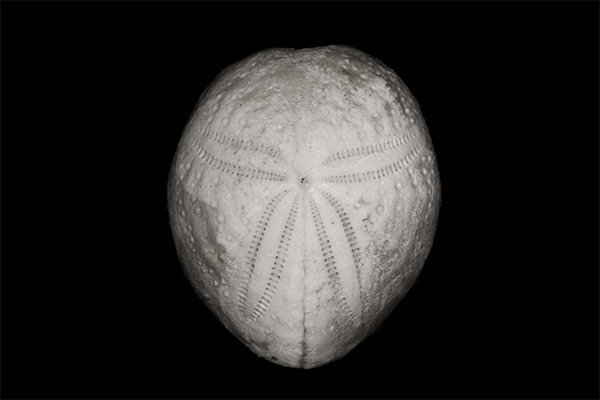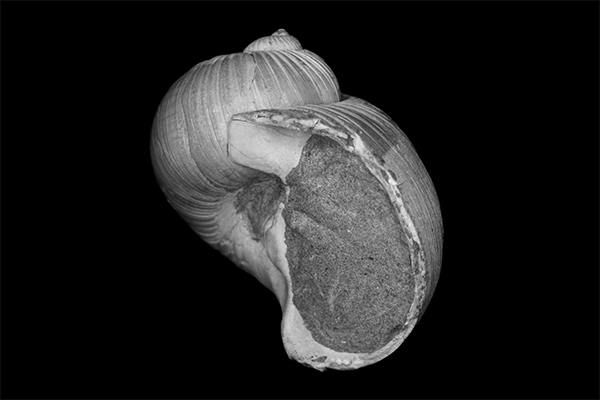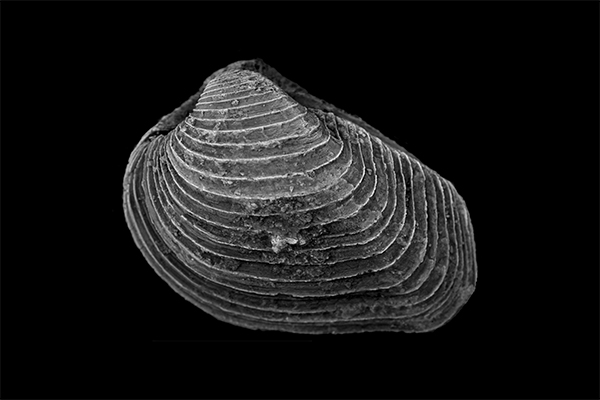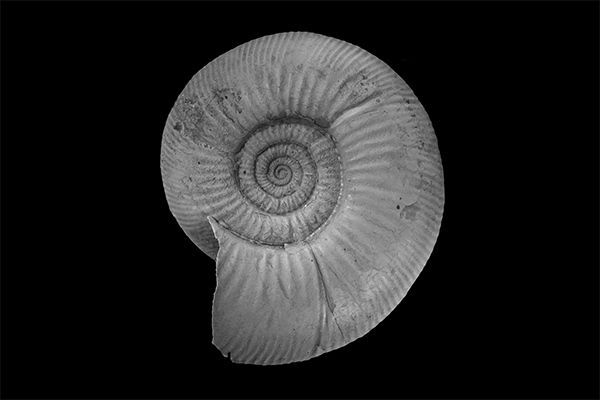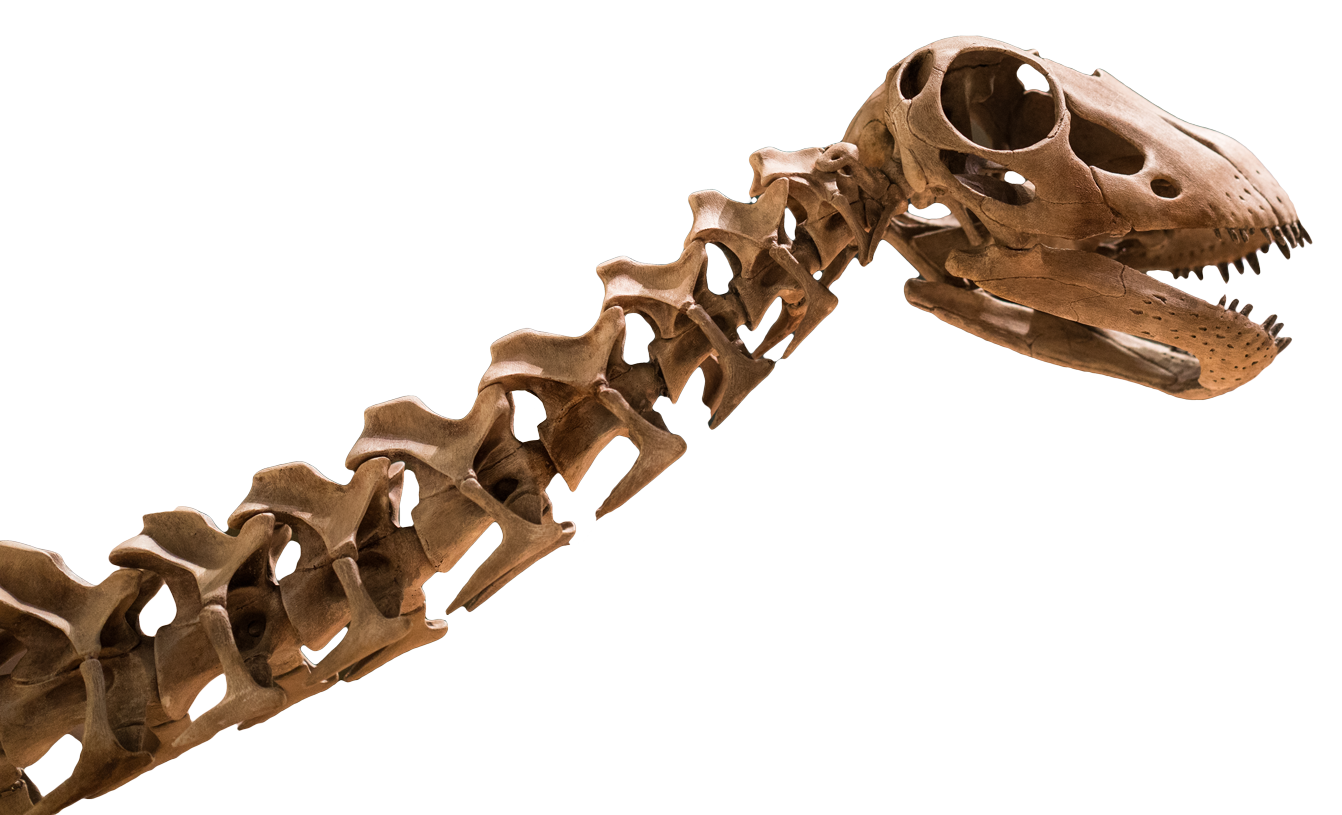Invertebrates (“animals without backbones”) are all complex (more than one cell) animals except for the vertebrates (“animals with backbones”). Almost all animal species alive today are invertebrates (about 96%). In fact there are more species of crustaceans (crabs, lobsters and relatives; about 68,000 species) than vertebrates (mammals, reptiles, fishes, etc.; about 47,000 species). It was the same in the past, and almost all animals found as fossils in Oklahoma or anywhere else are invertebrates. Common kinds of invertebrate fossils include molluscs (snails, bivalves and cephalopods), arthropods (trilobites), echinoderms (sea urchins and crinoids), brachiopods, and cnidarians (corals). Our gallery pages illustrate specimens from the collections of the Sam Noble Museum, and you can search for more information in our database of fossil invertebrates and plants. The invertebrate specimens shown in these web pages are from the Invertebrate Paleontology collection at the Sam Noble Museum.
The Sam Noble Museum at The University of Oklahoma inspires minds to understand the world through collection-based research, interpretation, and education.


